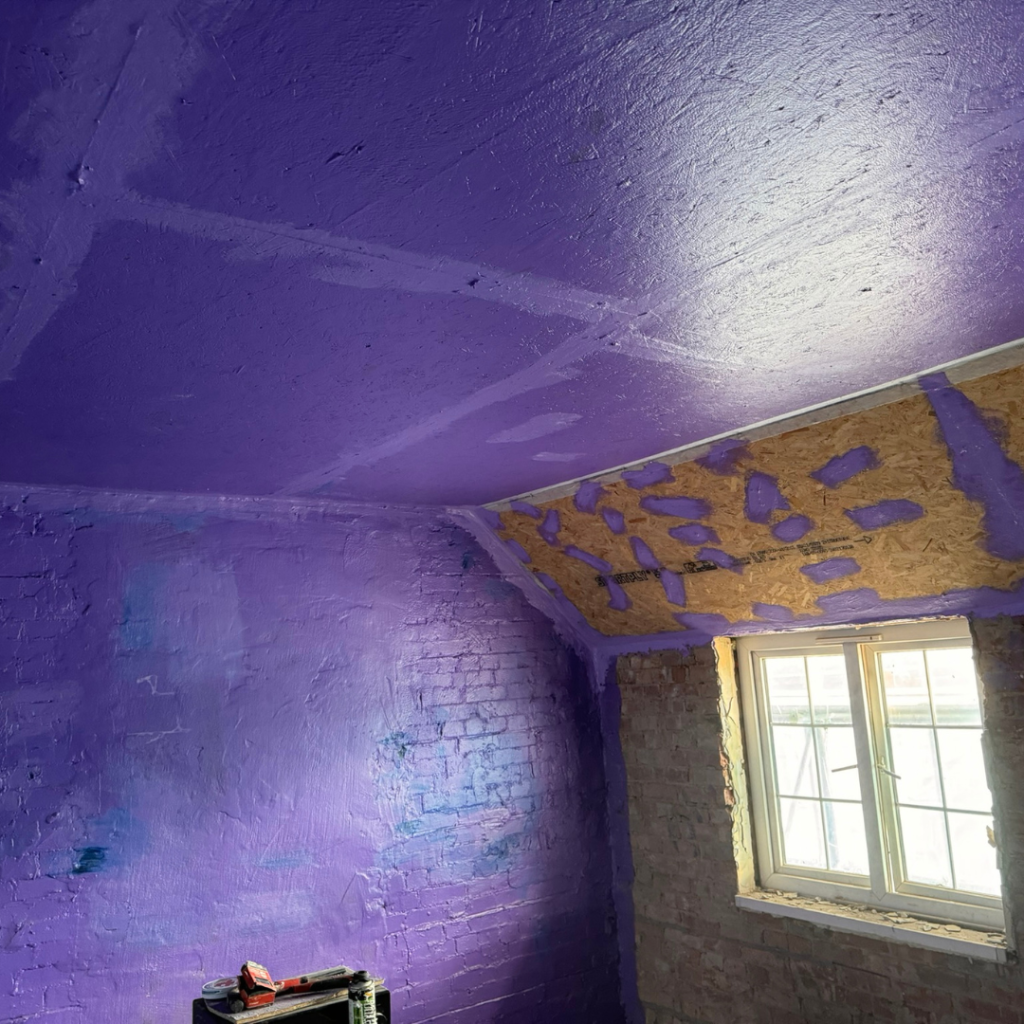13789
“Retrofit Damp Control: Intelligent Internal & External Solutions That Last”
Retrofit Damp Control Made Simple
Written by
The Secret to Stopping Internal Damp in Retrofit Projects
Intro – Damp Control Done the Right Way
When retrofitting older buildings, internal dampness can be one of the toughest issues to solve. Cold, wet walls don’t just ruin finishes — they can make rooms harder to heat, reduce indoor air quality, and cause long-term structural problems.
The mistake many systems make is simply sealing the wall from the inside. That may hide the problem temporarily, but it often traps moisture in the wall and pushes the damage elsewhere.
The smarter approach is to protect both inside and outside, create an airtight but intelligently breathable barrier, and combine it with the right ventilation strategy so excess moisture is safely managed.
Step 1 – Stop External Moisture at the Source
If you only fix the inside, damp can still get into your building fabric from the outside. The first step in lasting damp control is protecting external walls with a breathable weather barrier.
Choose one of our high-performance solutions:
- Passivhaus Brickseal – a clear, vapour-open weatherproof coating that keeps your original brick or masonry appearance.
- Passive Purple External – a coloured, Fire Class B airtight paint for external walls that combines weatherproofing with design choice.
Both products block wind-driven rain and external damp while still allowing vapour to escape.
Step 2 – Create an Intelligent Airtight Barrier Inside
Once the outside is protected, you can tackle the internal walls.
Our Passive Purple is an intelligent airtight membrane that stays airtight when it needs to keep cold and damp out, but can breathe when vapour needs to escape. Certified by the Passive House Institute, it’s designed for both retrofit and new build.
Benefits for retrofit:
- Airtight when it matters – Stops cold draughts and moisture ingress.
- Breathes when needed – Prevents trapped vapour and condensation.
- Seamless application – Spray or brush for a continuous barrier.
- Bridges cracks – Works across irregular surfaces without gaps.
Step 3 – Prepare the Surface Properly
Good preparation ensures long-term performance. Before applying Passive Purple:
- Check substrate condition.
- If the surface is dusty, chalky, or very porous, apply IM Primer first to create the ideal base.
Step 4 – Choose Your Internal Finish
Once Passive Purple is fully cured, you can choose how to finish your wall:
- Paint directly over it – Any standard decorative paint works.
- Switch to Airtight White – Use our Airtight White for the same airtight performance with a bright white decorative finish.
- Plaster over it – First apply Supergrip as a bonding layer, then plaster as normal.
Step 5 – Don’t Forget Ventilation
Airtightness is only half the story — you must also control indoor moisture through ventilation. In retrofit projects, that might mean adding:
- A small MVHR (mechanical ventilation with heat recovery) unit
- Trickle vents in windows
- Mechanical extract fans in kitchens and bathrooms
This ensures indoor humidity is removed before it becomes a condensation or damp issue.
Targeted Airtight Detailing
For sealing service penetrations, junctions, or small damp-prone areas, Passive Purple in Sealant Tubes gives you the same intelligent airtightness in a precise, easy-apply format.
Example Retrofit Project
You’re renovating a 1920s solid brick home. The external walls are treated with Passivhaus Brickseal to stop driving rain. Internally, Passive Purple is applied to living room walls, with IM Primer used first where needed.
In the kitchen, you opt for Airtight White as the finish, while in the hallway you plaster over Passive Purple using Supergrip as the bonding layer. A small MVHR unit is installed to keep humidity under control.
The result? Warm, dry, and healthy rooms — with airtightness, damp control, and breathable safety built in for the long term.
Final Thoughts
Effective retrofit damp control means treating both sides of the wall, choosing intelligent breathable barriers, and pairing them with proper ventilation.
With Passive Purple inside, Passivhaus Brickseal or Passive Purple External outside, IM Primer for preparation, Supergrip for plastering, and Airtight White for decorative finishes, you can stop damp at its source and give your building a healthier future, the Intelligent Membranes way
📞 Contact our team via our contact page for tailored advice on retrofitting airtight, breathable damp control systems.

Written by
Passive Purple Editions
-

Passivhaus Airtight Sealant – 600ml
Enquire Now Below From £12.00 + VAT Select options This product has multiple variants. The options may be chosen on the product page

